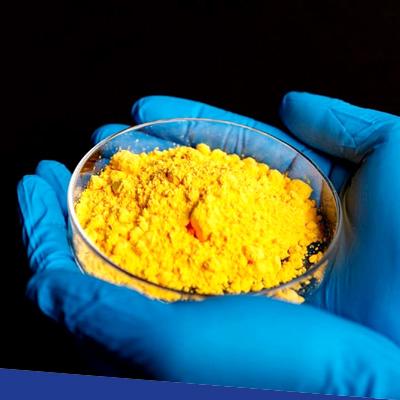The blowing agent market is expected to grow at a CAGR of 5.5% to reach USD 2.3 billion by 2029 from USD 1.8 billion in 2024. The market growth is driven by various factors, including the significant demand from construction and automotive industry. The market research report presents a complete judgment of the market through strategic insights on future trends, blowing agent market size, share, growth factors, supplier landscape, demand landscape, Y-o-Y growth rate, CAGR, pricing analysis.
The Blowing agent market is driven by increasing demand in various end-use industries and high growth in the global polymeric foams market. Regulations requiring blowing agents with lower global warming potential (GWP) and ozone depletion potential (ODP) have also led to the use of more environmentally friendly agents like hydrofluoroolefins (HFOs) and hydrocarbons.
Download PDF Brochure: https://www.marketsandmarkets.com/pdfdownloadNew.asp?id=71329121
Driver: High growth in global polymeric foams market
The polymer foam market is driven by increasing demand from the packaging, automotive, building & construction, marine, transportation, appliances, bedding & furniture, and packaging industry. The growth of the polymer foams market further facilitates the use of blowing agents, and hence this directly affects the volume of blowing agents required. Also, continuous expansion, growing awareness of high-quality products and demand of polymeric foam industry, especially in APAC, the Middle East & Africa, and South American regions, would create a huge demand for blowing agent used for foam blowing purposes. The emerging economies, such as India, China, Brazil, Southeast Asia, and Mexico, are expected to be the most lucrative destinations for the polymer foam market in the near future. Thus, the expected increase in the demand for different types of polymeric foam in varied end-use applications will drive the market for blowing agent in the coming years.
“Polyolefin foam is projected to be the fastest growing foam type of blowing agent, in terms of value, during the forecast period.”
Polyolefin foam, such as polyethylene (PE) and polypropylene (PP) foam, is experiencing rapid growth as a blowing agent. Polyolefin foams are lightweight and versatile materials that offer excellent cushioning, insulation, and buoyancy properties. They can be easily molded or fabricated into various shapes and sizes, making them suitable for a wide range of applications across industries such as packaging, automotive, construction, and sports equipment.
Get Sample Copy of this Report: https://www.marketsandmarkets.com/requestsampleNew.asp?id=71329121
“Hydrocarbons is the largest type of the blowing agent, in terms of value.”
Hydrocarbons, such as pentanes and cyclopentane, have low global warming potential (GWP) and zero ozone depletion potential (ODP). With increasing environmental concerns and regulations targeting substances with high GWPs and ODPs, hydrocarbons have become popular as environmentally friendly blowing agents. Many countries have implemented regulations to phase out or restrict the use of blowing agents with high GWPs and ODPs, such as hydrochlorofluorocarbons (HCFCs) and certain hydrofluorocarbons (HFCs). This has led to a shift towards alternative blowing agents like hydrocarbons to comply with these regulations, such as the Montreal Protocol and the Kigali Amendment.
“Asia Pacific captures the largest share in the blowing agent market during the forecast period, in terms of value.”
Asia Pacific has experienced significant industrialization and urbanization over the past few decades, leading to increased demand for various industrial and construction materials, including blowing agents. The region's booming manufacturing sectors, particularly in countries like China, India, Japan, and South Korea, have driven the demand for blowing agents in applications such as foam insulation, packaging, automotive, and construction. The region's economic expansion is also a significant contributor to the expansion of the global blowing agent market.
Mergers, new product launches and expansions are the major growth strategies adopted by the key players in the market. The key global players in the blowing agents market include Honeywell International Inc. (US), Solvay (Belgium), Arkema (France), Exxon Mobil Corporation (US), Linde PLC (UK), Daikin Industries Ltd. (Japan), The Chemours Company (US), BASF SE (Germany), HCS Group (Germany), FSI (US), and Harp International Ltd. (UK).
Get 10% Free Customization on this Report: https://www.marketsandmarkets.com/requestCustomizationNew.asp?id=71329121
Honeywell International Inc. is a major technology and manufacturing company globally. The company offers its products through four operating segments, namely, aerospace, building technologies, performance materials and technologies, and safety and productivity solutions. The company provides blowing agents through its performance materials and technologies segment. Honeywell, along with its suppliers, has invested over $900 million in research and development and expanded manufacturing capabilities for the production of foam blowing agents, refrigerants, solvents, and propellants using hydrofluoro-olefin (HFO) technology. Their portfolio, branded as Solstice, enables customers to reduce their carbon footprint without compromising product performance. Specifically in the foam industry, Honeywell provides Solstice Liquid Blowing Agent (LBA) (HFO-1233zd(E)) and Solstice Gas Blowing Agent (GBA) (HFO-1234zd(E)), widely embraced as substitutes for HCFCs and other blowing agents across various foam applications. The company operates state-of-the-art production facilities in the U.S. and China. Notably, Honeywell's patent portfolio encompasses key molecules, including HFO-1233zd(E), HFO-1234ze(E), and HFO-1336mzzm.

